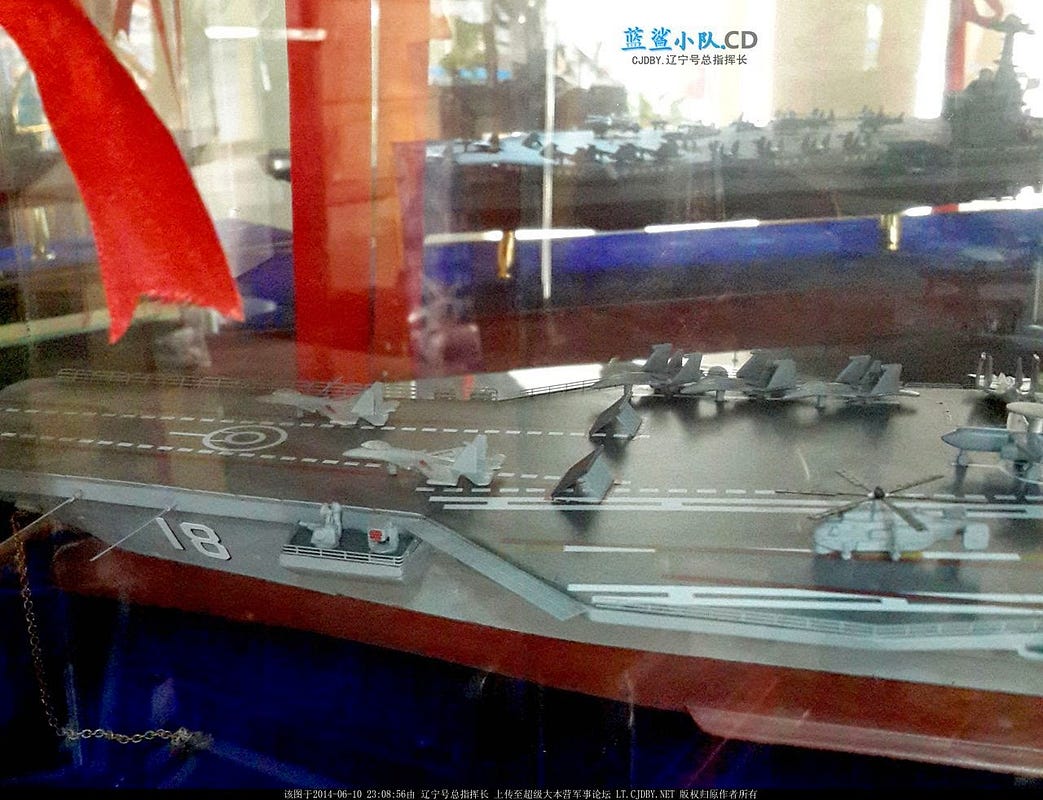China’s first aircraft carrier—the refurbished Ukrainian-built flattopLiaoning—entered testing in 2011. The People’s Liberation Army Navy is building a second carrier itself—a conventionally-powered vessel likeLiaoning.
A third carrier currently in the planning stage could be bigger than her two predecessors—as big as an American Nimitz-class supercarrier, in fact—plus nuclear-powered, just like U.S. flattops. Atomic propulsion confers greater sailing range and supports more sensors, weaponry and other systems.
Lots of countries have one or two aircraft carriers. But none build flattops as big and capable as America’s 11 Nimitzs and new Ford-class CVNs. Evidence indicates that’s about to change.
In mid-June, Chinese Internet forum users circulated photos from an official event in Zhongshan. The photos depict what is “certainly a model of the first Chinese nuclear-powered aircraft carrier,” according to China Defense Blog.

Like arms companies all over the world, Beijing’s state industries routinely show off scale models of new weaponry designs before beginning construction.
The model “represents a final design for the new CVN [that] has been approved by PLAN for production,” China Defense Blog asserted. The ship’s features apparently mirror those on the latest American carriers—three elevators for efficiently moving planes between decks and four electric catapults for quickly launching them.
China Defense Blog apparently guessed the flattop’s planned size by comparing the scale model to the miniature jet fighters on its flight deck. The blog likened the new Chinese CVN—hull number 18—to the AmericanNimitzs and Fords, meaning CVN-18 could exceed a thousand feet in length and displace 100,000 tons, a third bigger than Liaoning.
A ship that size could carry 75 or more warplanes.

With Liaoning for experiments and trial deployments, China is quickly developing its at-sea aviation capability. U.S. Naval War College analyst Andrew Erickson expects Beijing to produce “more than three” homemade flattops, presumably by the 2020s.
Nuclear carriers aren’t cheap. America’s first Ford-class ship is costing $13 billion just for construction. A single atomic-powered vessel can require hundreds of millions of dollars a year for operations.
Beijing seems to consider the ships worth it. “Developing such a capability is the only way for China to achieve robust sea control and long-range maritime power projection,” Erickson wrote.
Law requires the U.S. Navy to maintain 11 large carriers, of which two or three are usually at sea. The Americans also possess nine active “big-deck” amphibious assault ships that can carry Harrier jump jets and, starting next year, F-35B stealth fighters.
David Axe’s new book Shadow Wars is out. Sign up for a daily War is Boring email update here. Subscribe to WIB’s RSS feed here and follow the main pagehere.
No comments:
Post a Comment